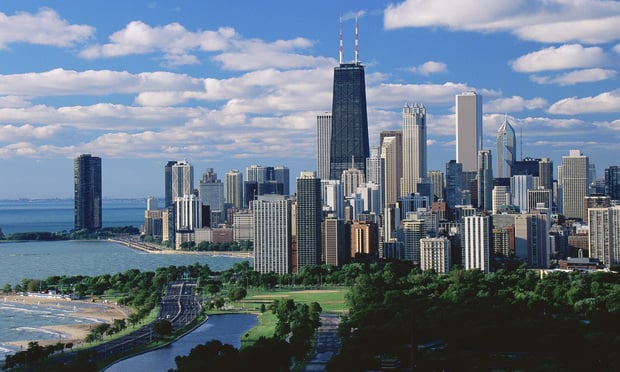CHICAGO-In many respects the Chicagoland retail picture is still a bit darker than the overall national scene. But according to Patrick Owens, senior vice president in the local Transwestern office, there's one way in which they're on par: The Internet.
Asked to rate brick-and-mortar's assimilation of the changes being wrought by online shopping, Owens gives a grade of four out of a possible 10. “Stores are still trying to decide how big they need to be,” he observes. “Obviously, the notes of doom we heard years ago about the Internet replacing brick-and-mortar were overblown, but throughout the country, the stores that will survive and thrive will make it possible for customers to use any of the channels they want and pick up or return merchandise as easy and seamlessly as possible. That's what retailers are trying to figure out.”
He estimates that on a national basis, we won't be where we need to be for another 10 years. “Customers have a growing expectation concerning Internet shopping,” he tells GlobeSt.com. “And it's up to the brick-and-mortar retailers to rise to that expectation in terms of seamless customer service.”
But long before the problem of the Internet is solved, the Chicago market, Owens' primary area of focus, has even more basic concerns to handle in that there's still a cautionary post-recession note overhanging the retail business. Chicago-area shoppers are still in a needs-based buying mode, he says. That, however, is driving a lot of activity from the grocery segment of the market.
“We're seeing a realignment of retail toward the city core,” he explains. “A majority of our new development and major leasing activity is happening back in urban high-density markets rather than in the suburban and exurban developments. But we're not seeing the major rollouts that we'd like to have. Only grocery continues to expand, and we're seeing immense competition for that same grocery dollar.”
He cites a major chain in the state, Dominick's, which shuttered last year. The race to fill the former Safeway subsidiary's footprint is being run by such other grocers as Mariano's and Fresh Thyme Farmer's Market.
And as we heard so often during the recession, the realignment he referred to is causing a flight to quality, “like my client Tuesday Morning, which is taking advantage of the slightly lower rates to move to better centers.” So better centers are getting better and “the poorer centers are getting poorer. But they may not fall by the wayside. Rather, they're shifting to alternatives such as fitness or medical usage.”
While the Chicago market is still feeling the recessionary pinch, much more than other regions, Owens says there are remnants of the slowdown evident nationally, and he wants to see the retail sector as a whole shake off the dust of the downturn. “I'd like to see the entire national market emerge from the constant sale cycle we're in now.”
He explains that it's typical to get a 30%-off email from the Gap, with the warning that the sale is ending today, only to get the same email two days later. “That's a sign that the recession hasn't cleared yet.”
© Touchpoint Markets, All Rights Reserved. Request academic re-use from www.copyright.com. All other uses, submit a request to [email protected]. For more inforrmation visit Asset & Logo Licensing.







